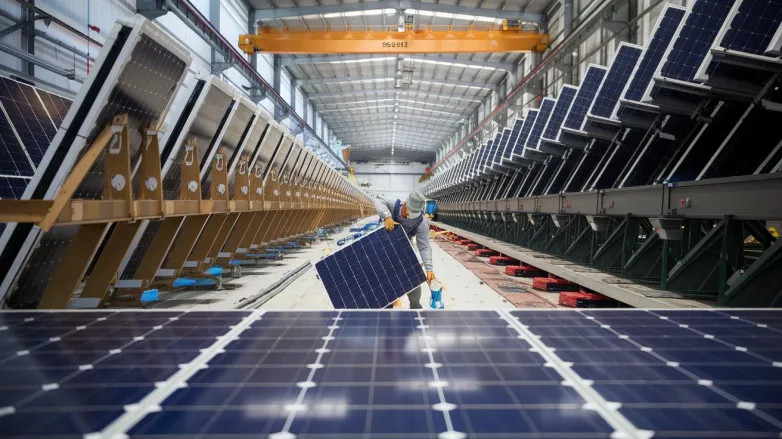U.S. Tariffs Deepen India’s Solar Glut, Exports Face Squeeze Today
- New U.S. tariffs and potential anti-dumping duties threaten India’s module exports, amplifying an already severe domestic oversupply.

India’s solar manufacturing boom is running into a wall overseas. Fresh U.S. import tariffs of 50% on Indian-made modules—and the prospect of additional anti-dumping duties—now jeopardize a market that absorbs the vast majority of India’s solar exports. Analysts say the hit could exacerbate a deepening supply glut at home, where factories are already underutilized despite rapid capacity expansion.
The numbers tell the story. India has ramped nameplate module capacity to roughly 74 GW and is targeting ~190 GW by 2027, spurred by incentives and import barriers designed to build an end-to-end domestic chain. Yet producers are reportedly operating at about a quarter of capacity, and project bidding at home has slowed—two signs that supply is outpacing near-term demand. The loss (or delay) of U.S. sales would force more product back into an already crowded local market.
There’s another wrinkle. Starting in 2026, many Indian tenders will mandate the use of India-made cells, not just modules. Until then, developers may race to import cheaper Chinese cells and modules, stockpiling where they can—behavior that could drive short spikes in pricing and stress logistics. If anti-dumping duties land on top of the existing tariffs, that route could narrow further, pushing buyers to renegotiate schedules or switch suppliers altogether.
For Indian manufacturers, the path forward runs through cost and credibility. Plants that can prove competitive on efficiency, durability, and warranty—and that can qualify for demanding international tenders—will fare better if the U.S. window narrows. Diversifying export destinations (Southeast Asia, the Middle East, Africa) and building deeper domestic offtake via utility, C&I, and rooftop channels can also cushion the blow. For project developers, procurement strategies need a second look: staggered deliveries, multi-supplier hedges, and more realism on lead times.
Bottom line: the tariff shock doesn’t erase India’s manufacturing rise, but it does raise the stakes. In the near term, expect more volatility in pricing, utilization, and tender outcomes as the industry absorbs a hard stop in its biggest export market.
Also read
- India Slashes Solar GST, Developers Eye Cheaper Tariffs And Restarts
- ABO Energy wins tariffs for first Polish solar park in latest RES auctions
- Trump Clampdown Tightens Rules on Wind and Solar Tax Credits
- US Imposes Steep Tariffs on Southeast Asian Solar Equipment Imports
- US Imposes Massive Tariffs on Southeast Asian Solar Panels


